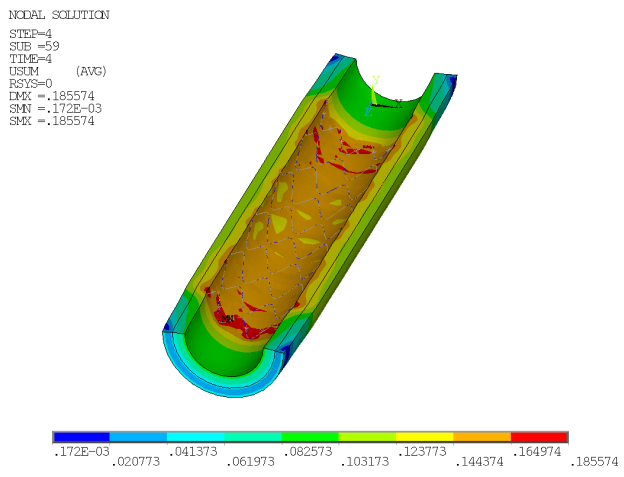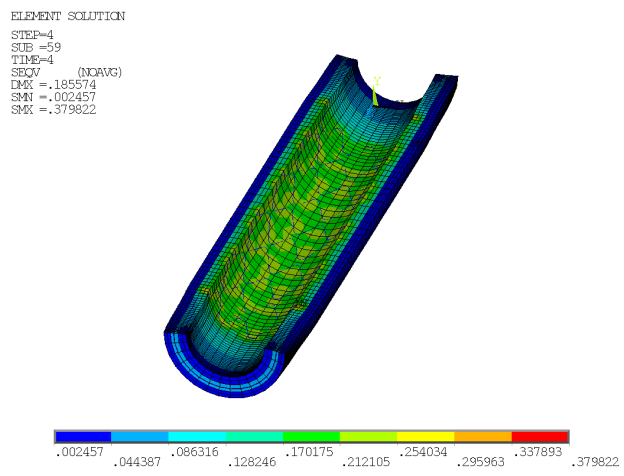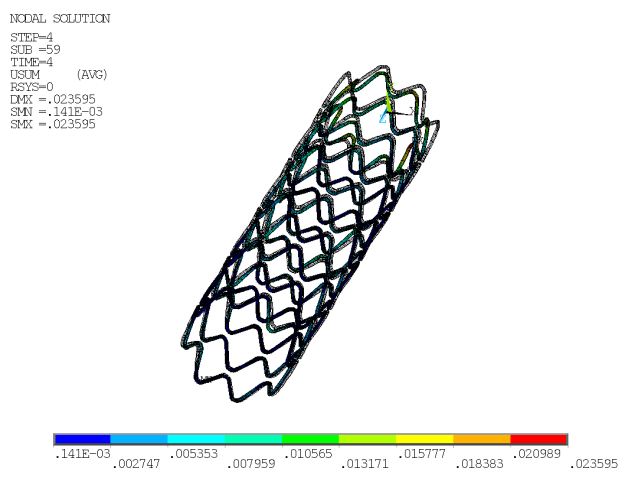Proper element technologies and solution options allow a successful nonlinear simulation of stent-artery interaction. The analysis generates detailed information about the post-insertion artery wall deformation, wall stresses, and stent retraction.
The positive effect of stenting is evident in the following figure, which shows the artery wall configurations before and after stent placement:
Figure 25.10: Arterial Wall Deformation During Balloon Angioplasty (a) and After Stent Placement (b)
 |
 |
| (a) | (b) |
The following figure clearly shows the expected tissue prolapse (tissue extension into the gaps in the stent):
This figure shows the detailed stress distribution on the inner artery wall, with an expected pattern matching the stent geometry:
Finally, the stent retraction under compressive load from the occluded artery wall is shown in this figure:
The simulation results agree well with those in the published literature.[1]
FEA-based simulation is capable of quickly generating accurate and detailed information about stent-artery interaction. Finite element modeling is being used not only to develop state-of-the-art stent innovations, but also for pre-clinical patient-specific assessment and customization.





